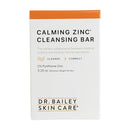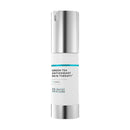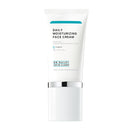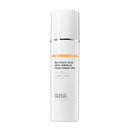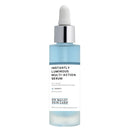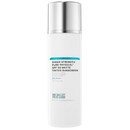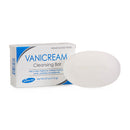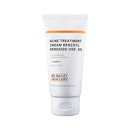Prescription Medication and Cosmetic Procedures To Treat Rosacea

Prescription medication to control the pimples and redness of rosacea, and treatments to get rid of the 'broken' facial capillaries, are often what brings a rosacea patient to the dermatologist's office. I've treated rosacea for over 30 years in my dermatology practice. In this article, I'm going to share with you how I use prescription creams, oral medicines, and cosmetic procedures to help my rosacea patients. I have rosacea myself, so I've also been on the receiving end of much of what I'm going to discuss.
It’s important to note that this information is for educational purposes only and represents my opinions. If you think that something you read here may be helpful for you, you need to discuss it with your treating dermatologist.
How to Treat Rosacea
- What are the topical medicated prescription products that I find are the most effective for treating rosacea in my dermatology practice?
- What are the best cleansers for rosacea?
- What are the best topical leave-on products and prescription medicated skin care products for rosacea?
- What oral prescription medicine do dermatologist's use to treat rosacea?
- What are the best cosmetic procedures to treat rosacea in my practice?
This article is the 5th article in my rosacea series. You can find the other articles at the end of the post including those with general information on the symptoms and signs of rosacea, how I control rosacea with a simple skin care routine, and my holistic approach to rosacea that includes the best diet and lifestyle choices for reducing physiologic inflammation that can lead to skin inflammation, including rosacea.

The best rosacea medications that I use in my dermatology practice.
Pro-tip: Never depend on a prescription alone to control this stubborn, chronic, and at times unrelenting skin problem. Add prescriptions to a rosacea-healing skin care routine to gain sustainable control of your rosacea. - Dermatologist Dr. Bailey
One of the biggest reasons that people are frustrated with prescription rosacea treatments that they get from their doctors is that the docs give them a prescription but don't take the extra time to teach them how to take care of their sensitive rosacea-prone skin. I see rosacea patients using the wrong irritating skin care products for rosacea, and no amount of prescription medicine can fight that.
Your skin care routine will make or break getting control of your rosacea. - Dr. Bailey

I always add prescription topical medicines into a rosacea-healing skin care routine. I call this a Complete Skin Care Routine™ and it gives skin everything it needs in the 4 essential skin care steps of:
- CLEANSE,
- CORRECT,
- HYDRATE,
- PROTECT.
This is especially important for rosacea which is a condition that is easily triggered by harsh cleansers, inadequate moisturizer use and even the slightest amount of UV exposure. My Complete Skin Care Routine for rosacea is found in my Rosacea Therapy Kit. I'll explain how I add prescription products to a routine such as this.
What are the best topical medicated prescription products that I find work for my dermatology patients?
I'm going to start with medicated cleansers and then list the leave-on medicated prescription creams to treat rosacea.
What are the best medicated prescription facial cleansers for rosacea?
Sodium sulfacetamide and sulfur antibiotic cleanser for rosacea treatment

There is pretty much just one prescription facial cleanser that I've found useful for rosacea and it's sodium sulfacetamide and sulfur. I have patients use it once or twice a day. If it is used once daily, I have them alternate it with a pH balanced cleanser such as my Extremely Gentle Foaming Facial Cleanser that comes alone or in the Rosacea Therapy Kit. Because it is an antibiotic, I always like to use it when needed then take a 'drug holiday' to prevent antibiotic resistance. I do this by trying to get my patient's complexion switched over to Calming Zinc Soap (fortified with 2% pyrithione zinc, which is not an antibiotic, and that works to discourage skin microbes by a broad mechanism of action that does not create resistant microbes).
Sodium sulfacetamide is a sulfa antibiotic. It works against a broad range of skin bacteria. When sulfur is added, it works even better and has efficacy against bacteria, fungi/yeast and some parasites (think possibly Demodex mites in the case of rosacea). This antibiotic can't be used by people who are allergic to sulfa drugs. The sulfur also smells and can be drying but I generally find this cleanser is well tolerated. We don't know the cause of rosacea, nor why antibiotics like sodium sulfacetamide work to treat rosacea, but they are a mainstay of rosacea therapy, both for topical and oral treatment.
What are the best topical leave-on products and prescription medicated creams and skin care products for rosacea?
Most of my rosacea patients use Green Tea Antioxidant Skin Therapy. In my practice, all prescription leave on products are applied after the Green Tea.
Metronidazole cream and gel prescription for rosacea
Metronidazole is a prescription antibiotic that has been used topically to treat rosacea for decades. It is well tolerated. Depending on the strength and the specific product it is applied once or twice a day.
Topical antibiotic foams and cream prescriptions for rosacea

There are other antibiotics used topically to treat rosacea including clindamycin, erythromycin and minocycline. Clindamycin has also been combined with benzoyl peroxide and used for rosacea. These products come in creams, lotions, gels and solutions. They are products used to treat other conditions like acne and so they get tried on rosacea when doctors and patients are frustrated.
I consider the collection of topical antibiotics variations on a theme, I try to match the product to the patient's preferences for how it feels on their skin, what their insurance covers and how well it works for their unique case of rosacea. Once the skin is clear, I like to get them off antibiotics for a 'drug holiday' so that we don't unbalance their skin microbiome or create resistant bacteria.
We don't fully understand why antimicrobial treatment works for rosacea. Philosophically and scientifically, I prefer to do the antimicrobial population reduction with non-antibiotic ingredients such as pyrithione zinc and benzoyl peroxide to avoid creating antibiotic resistant microbes - Dr. Bailey
Other medicated prescription face creams for rosacea
Azelaic Acid
Azelaic acid creams, foams and gels (typically in the 15 to 20% range) are used to treat rosacea, especially pustular rosacea. Most of my rosacea patients don't like these products because they can make the skin sting or itch. Interestingly, azelaic acid is a molecule made by the common skin germ Malassezia furfur that can cause 'fungal' acne (a misnomer because Malassezia is a yeast). This molecule also can modify pigment production and azelaic acid can be useful for pigment skin problems such as melasma. You will see it in skin brightening products. Again, over the years, I've not been hugely impressed by azelaic acid and most of my rosacea patients find it causes their skin to sting while doing little to improve their rosacea. That said, everyone's skin is different and you will find people who find it helpful for their rosacea.
Ivermectin Cream
Ivermectin cream is a game changer in rosacea treatment. It's the first really good new prescription medicine that's come along for this frustrating skin problem during the course of my 42 years in medicine. Currently, the only brand of ivermectin cream is Soolantra, and it's expensive.
What is ivermectin and why does it help rosacea

Ivermectin is a common and anti-parasitic medicine created in the 1970s. It has been used in humans and animals to kill parasites such as worms. There is nothing new or sexy about ivermectin but the idea of applying it to the face to kill Demodex mites is brilliant - and profitable for the pharmaceutical company that makes it.
Demodex mites are known to overpopulate the skin of rosacea patients. Reducing their numbers often improves rosacea. - Dr. Bailey
Demodex mites play an as yet to be fully elucidated role in the flushing, redness and pimple misadventures of rosacea. Discouraging mite abundance helps rosacea. But the mites come back. Yep, they are back within a month meaning mite population control treatment is ongoing - and expensive.
Rosacea medicated cream alternative to ivermectin
I've used permethrin cream (a scabies treatment cream) to control facial Demodex mites in my practice for probably 25+ years. This cream is economical and I find that it works well. My little trick is 'off label' meaning that it is not FDA approved and I share it solely for educational purposes as a topic of discussion between you and your doctor.
Brimonidine Gel for rosacea

Brimonidine is a medicine that causes capillaries to constrict to reduce facial flushing. The brand name is Mirvaso. It works to relieve redness in as little as 30 minutes and the results can last up to 6 hours. It only works when used and does not improve rosacea over the long run. I consider it useful when the flushing needs to be controlled for an event.
Typically, studies beyond 1 year of use are not published. However, one case report of a person who used it for 2 years was published and refractory facial redness was an unfortunate side effect. It makes sense to me because this class of medicines, called alpha blockers, is known to do that.
A new related medicine called oxymetazoline hydrochloride has been approved. It works the same way. You know it as Afrin nasal decongestant spray. Basically, it's a variation on brimonidine and I expect the same issues of refractory vascular congestion and redness. In my opinion, I only use alpha blockers for the occasion really important days where facial flushing must be controlled.
Benzoyl peroxide cream for rosacea
Benzoyl peroxide cream can be beneficial for papulopustular rosacea on complexions that are not sensitive. Most people with rosacea have skin that is far too sensitive to tolerate benzoyl peroxide. That said, I've had patients use it whom I never thought would tolerate benzoyl peroxide and yet had excellent response. Why it works in rosacea is a mystery. Benzoyl peroxide has a broad mechanism of action against microbes. I also think it may have some efficacy against Demodex mites, but that has yet to be studied.
Clotrimazole cream for rosacea

I often use clotrimazole cream or ketoconazole cream for my rosacea patients that have both rosacea and facial dandruff., This is a common skin problem combination; facial redness, flaking, sensitivity and pimples that are difficult to treat. Clotrimazole is an antifungal and anti-yeast medication. The idea is that the Pityrosporum yeast (aka Malassezia) overgrows its normal level on the skin and plays a role in causing facial seborrheic dermatitis, which in turn increases facial redness and sensitivity. Clotrimazole helps to treat the yeast.
I have my patients apply clotrimazole cream after the Green Tea Antioxidant Skin Therapy. The clotrimazole cream comes in a moisturizing base that may make the need for additional moisturizer unnecessary. I typically use it twice a day for a month then as needed to control flaking and sensitivity. Yeast and fungi can develop resistance to clotrimazole much the way bacteria become resistant to antibiotics. For this reason, Calming Zinc soap is my preference for addressing Pityrosporum on a long-term basis.
Can you use prescription cortisone cream on rosacea?
Only under your doctor's supervision may this be appropriate! And, it's critical to use only non-halogenated topical cortisone steroid creams (such as over-the-counter hydrocortisone cream) on the face. I use them as a last resort for short term control of facial inflammation. In my opinion, any doctor prescribing cortisone cream for someone's face needs to know what 'non-halogenated cortisone' means and why it's important on the face!
Cortisone cream, especially halogenated corticosteroids, will aggravate rosacea. They lead to perioral dermatitis, a condition that is no fun. Steroid creams can also thin your skin and damage your eyes. Your dermatologist will know what this means and should be the one to prescribe and supervise any cortisone use on your face.
How long does it take medicated prescription creams to work for rosacea?

It varies. You may begin seeing improvement in as little as a week. That said, I give any treatment strategy 2 month to really declare itself effective or ineffective. I like to see a medicated cream improve skin and help maintain improvement over all the ups and downs that rosacea flare ups can create.
What oral prescription medicine do dermatologist's use to treat rosacea?
Again, I’m biased in that I don’t like to manage a chronic skin condition such as rosacea with lifelong antibiotics. I use antibiotics to ‘get the attention of a person’s skin’ then stop them once the skin has cleared. I typically use a full therapeutic dose to ‘get in and get out’ as fast as possible without creating super germs.
Over my career, my favorite oral antibiotics to treat rosacea are tetracycline and doxycycline. Low dose doxycycline is now the best alternative in my opinion for longer term use. This dose is considered 'sub antimicrobial' and is thought to work via doxycycline's anti-inflammatory mechanisms. Thus, it's an antibiotic that's not working as an antibiotic.
I'm still not a fan of long term antibiotic usage and try hard to avoid it by building a holistic approach to rosacea that includes a Complete Skin Care Routine with my Rosacea Therapy Kit and lifestyle and diet choices to suppress overall inflammation that might drive rosacea. (See the articles below where I describe both my skin care and lifestyle recommendations for rosacea.)
There are other antibiotics that you will see promoted for rosacea. Minocycline is one. I don’t use minocycline because of its unique and serious side effects like liver inflammation, autoimmune syndrome/arthritis and gray skin discoloration. I also rarely use erythromycin due to its drug interactions.
In patients with very severe rosacea, I’ll consider a temporary course of Accutane if we've tried everything and their rosacea is severe and still making them miserable, though this is a last resort.
What are the best cosmetic procedures to treat rosacea in my practice?
Intense Pulsed Light for rosacea

Intense pulsed light treatments are the biggest advance we’ve had for rosacea treatment over the entire course of my medical career. In my experience it both improves the cosmetic appearance of the skin’s ‘broken’ capillaries and quiets down a person’s propensity for flare ups of their rosacea.
How does IPL work for rosacea?
Strong light of many wavelengths in the visible spectrum are flashed into the skin and target hemoglobin in the capillaries and melanin in the skin and create heat. We can tune the laser to focus more specifically on the hemoglobin to somewhat selectively target the capillaries. When heated, the capillaries typically collapse and go away. But melanin is still always heated and so people with darker skin tones or tans are not good candidates for IPL. In my office the treatments are done as an initial series of 5 and then maintenance treatments are necessary every year. IPL treatments have made a big improvement in my own rosacea and I’m a big fan.
Electrocautery for telangiectasias of rosacea
Selective ‘broken’ capillaries can be cauterized with electrocautery to improve the cosmetic appearance of the skin. Low voltage electricity is applied to the skin directly over visible capillaries with a needle-small probe the thermally damage the vessel. The capillary needs to be traced at about 2mm increments until enough of it has been heated such that it disappears. It's a simple, but uncomfortable procedure that's economical and works immediately.
Laser treatment of rosacea
A number of lasers have been used to treat the large, abundant and flush-prone facial capillaries of rosacea. We dermatologists have our favorites and use what we have. Lasers such as Neodymium-doped, yttrium–aluminium–garnet (Nd-YAG) laser, 532 nm Potassium-Titanil-Phosphate (KTP), 595 nm PDL, IPL and dual wavelength long-pulsed 775 nm alexandrite/1,064 nm neodymium:yttrium-aluminum (LPAN) target hemoglobin to remove capillaries. What's most important is that your dermatologist gets good results with the laser they have.
The bottom line with prescription medical treatments and cosmetic procedures for rosacea:
There are a lot of options for this chronic and frustrating skin problem. Every prescription and procedure has pros and cons that need to be weighed thoughtfully because side effects are always a possibility. That's why I like to use skin care and a holistic approach to control rosacea and then add in the riskier treatments when we really need them. My Rosacea Therapy Skin Care Kit is the foundation routine I use for all of my rosacea patients.
To learn more about rosacea, there are 5 posts in this Rosacea Series:
What Are the Skin Symptoms of Acne Rosacea?
Rosacea Skin Care Tips from My Dermatology Practice
Acne Rosacea; Dermatologist's Natural Treatment of Rosacea
Prescription Medications and Cosmetic Procedures to Treat Acne Rosacea (this post)
Cited Scholarly Articles
1. Sarac G. A comparison of the efficacy and tolerability of topical agents used in facial Demodex treatment. J Cosmet Dermatol. 2019 Dec;18(6):1784-1787. doi: 10.1111/jocd.12986. Epub 2019 May 8. PMID: 31066486.
2. Sulphur for rosacea: Are we reinventing the wheel? JAAD, 66 (4),Supplement 1, AB33, April 2012
3. Del Rosso JQ, Baum EW. Comprehensive medical management of rosacea: an interim study report and literature review. J Clin Aesthet Dermatol. 2008;1(1):20-25.
4. Zhang H, Tang K, Wang Y, Fang R, Sun Q. Rosacea Treatment: Review and Update. Dermatol Ther (Heidelb). 2021;11(1):13-24. doi:10.1007/s13555-020-00461-0
5. Liu RH, Smith MK, Basta SA, Farmer ER. Azelaic Acid in the Treatment of Papulopustular Rosacea: A Systematic Review of Randomized Controlled Trials. Arch Dermatol. 2006;142(8):1047–1052. doi:10.1001/archderm.142.8.1047
6. Rubenstein RM, Malerich SA. Malassezia (pityrosporum) folliculitis. J Clin Aesthet Dermatol. 2014;7(3):37-41.
7. Del Rosso JQ. Azelaic Acid Topical Formulations: Differentiation of 15% Gel and 15% Foam. J Clin Aesthet Dermatol. 2017;10(3):37-40.
8. Del Rosso JQ. Topical Ivermectin: Data Supporting Dual Modes of Action in Rosacea. J Clin Aesthet Dermatol. 2017;10(9):39-42.
9. van Zuuren, E.J., Arents, B.W.M., van der Linden, M.M.D. et al. Rosacea: New Concepts in Classification and Treatment. Am J Clin Dermatol 22, 457–465 (2021). https://doi.org/10.1007/s40257-021-00595-7
10. Anderson MS, Nadkarni A, Cardwell LA, Alinia H, Feldman SR. Spotlight on brimonidine topical gel 0.33% for facial erythema of rosacea: safety, efficacy, and patient acceptability. Patient Prefer Adherence. 2017;11:1143-1150. Published 2017 Jul 6. doi:10.2147/PPA.S115708
11. Lowe Erin MSIV, Lim Scott DO, Paradoxical Erythema Reaction of Long-term Topical Brimonidine, JDD 15(6):763-765 (2016)
12. Jackson JM, Knuckles M, Minni JP, Johnson SM, Belasco KT. The role of brimonidine tartrate gel in the treatment of rosacea. Clin Cosmet Investig Dermatol. 2015;8:529-538. Published 2015 Oct 23. doi:10.2147/CCID.S58920
13. ElAhmed Husein Huesein, Steinhoff Martin, Evaluation of the efficacy of subantimicrobial dose doxycycline in rosacea: a systematic review of clinical trials and meta-analysis, JDDG, 19(1): 7-17 Jan 21
14. Engin B, Özkoca D, Kutlubay Z, Serdaroğlu S. Conventional and Novel Treatment Modalities in Rosacea. Clin Cosmet Investig Dermatol. 2020;13:179-186. Published 2020 Feb 20. doi:10.2147/CCID.S194074
15. Rivero AL, Whitfeld M. An update on the treatment of rosacea. Aust Prescr. 2018;41(1):20-24. doi:10.18773/austprescr.2018.004
16. Crump A, Ōmura S. Ivermectin, 'wonder drug' from Japan: the human use perspective. Proc Jpn Acad Ser B Phys Biol Sci. 2011;87(2):13-28. doi:10.2183/pjab.87.13
Author: Dr. Cynthia Bailey M.D. is a Board Certified dermatologist practicing dermatology since 1987. She has done well over 200,000 skin exams during her career and authors the longest running physician written skin health blog in the world.


